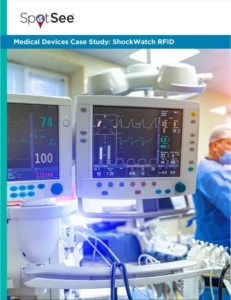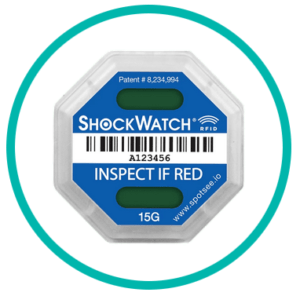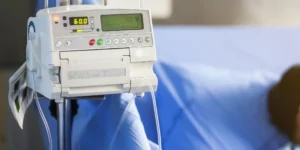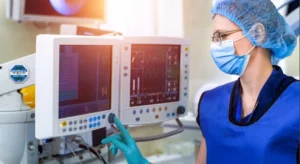Medical Devices Case Study: ShockWatch RFID
 Summary: Impact indicators have long been used to monitor medical equipment in transit. However, an RFID enabled impact indicator is just as valuable after medical devices are in service. The RFID will alert teams to possible damage due to impact as well as track equipment in use, lowering the loss of due to misplaced or stolen devices.
Summary: Impact indicators have long been used to monitor medical equipment in transit. However, an RFID enabled impact indicator is just as valuable after medical devices are in service. The RFID will alert teams to possible damage due to impact as well as track equipment in use, lowering the loss of due to misplaced or stolen devices.
Product Solution: ShockWatch RFID
Medical Devices Case Study: ShockWatch RFID
|
Company Profile Industry: Medical Application: Transportation of medical equipment Challenge: As medical equipment moves through the supply chain and |
 |
Are You Leveraging ShockWatch RFID Indicators’ Second Life?
Impact indicators have long been used to monitor medical equipment in transit. However, an RFID enabled impact indicator is just as valuable after medical devices are in service as they are during transit.
ShockWatch RFID impact indicators provide value long after the cargo they protect is delivered, but many people don’t realize it. RFID impact indicators provide a record of impacts throughout the supply chain and – importantly – as they move throughout a facility. They even can be used to monitor assets once the asset is in service.
Medical devices are a case in point. In hospitals, many devices, including defibrillators, ventilators, and infusion pumps, are stored at a central location and checked out as they are needed. If they are dropped or hit by other equipment, they may be damaged without anyone realizing it. Even large devices, such as PACS monitors, radiology equipment, and dialysis machines can be damaged by impacts. Putting medical devices back in service before they are checked for hidden damage may put patients at risk.
The ShockWatch RFID indicator provides three levels of protection. The first two alert logistics professionals to the potential for damage. They consist of a visible color change that is easily spotted by anyone handling the shipment, and an electronic record that is automatically entered into the facility’s inventory management system when it passes an RFID reader. Potentially damaging impacts can be noted and dealt with, and the conditions that caused them can be addressed. The third level of protection deters damage. Because the ShockWatch RFID indicator is clearly visible, handlers know this shipment or product is being monitored and, therefore, they tend to handle it more carefully.
Because ShockWatch RFID tags link automatically to the facility’s asset management system, medical devices can be tracked as they move throughout the hospital or clinic. Consequently, fewer items are lost or misplaced.
The problem of misplaced medical devices is very real. Approximately $520,000 worth medical supplies and equipment was misplaced (but later recovered) at the Indianapolis Veterans Administration Hospital between 2014 and 2016, a local news station reported. And that’s just one facility.
Whatever the reasons, misplaced medical devices may not receive manufacturers’ software or firmware updates, may not be properly maintained / calibrated, and most importantly, the equipment is not available for use, thus straining the healthcare system. Misplacing needed items also forces nurses to spend time searching for them, taking away time caring for patients. Tagging devices with an RFID indicator alleviates that issue.

Sometimes, medical devices are stolen. In 2021, a thief stole more than $1.9 million worth of continuous positive airway pressure (CPAP) equipment from the Veterans Administration in Georgia. The same year, someone else stole endoscopes worth $275,000 from Danbury Hospital in Connecticut. In 2019, thieves stole 18 colonoscopes worth a total of $450,000 from Lankenau Hospital in Wynnewood, Pennsylvania. RFID tags can help reduce losses to theft, too.
Protecting medical devices in this situation works on two levels. First, because the ShockWatch RFID indicator is noticeable, it alerts potential thieves that the device is being tracked, deterring actual theft. Secondly, it provides a record of the device’s movement through the facility, thus providing a dateline for the theft that can be correlated to the facilities’ video records or other security measures.
There’s another benefit, too, that’s particularly important for portable equipment. Because SpotSee RFID tags track threshold impacts and log them automatically when they pass RFID readers, healthcare facilities and the device manufacturers can determine where potentially damaging events occurred and, therefore, take steps to educate staff members regarding proper handling of the equipment.. With that knowledge, steps can be taken to prevent such problems in the future.

For manufacturers that may ship hundreds of thousands of sophisticated medical devices each year, the ability to pinpoint damage can result in significant savings. For example, knowing about damage that occurs on the loading dock or in transit allows the manufacturer to retrieve and repair the damage before it reaches the customer, thus reducing costly and time-consuming returns.
Cargo is, on average, handled seven times between the manufacturer and the client, and medical devices are increasingly sophisticated, which means they’re increasingly likely to be damaged unless proper precautions are taken.
Many devices incorporate delicate electronics. The high-definition monitors used in imaging applications are one example. They and other devices can be damaged by drops and other impacts that may snap solder joints or misalign internal components, or knock the devices out of calibration. Even if the equipment was perfect when it left the manufacturer or distributor, mishaps during transport can result in hidden damage that won’t be noticeable until the equipment is put into use.
ShockWatch RFID indicators are tamperproof so their results can be trusted, and serialized, so each one can be linked to a specific piece of equipment. They are available in a range of sensitivities, between 5G and 75G. The most sensitive can record drops of a few feet, like when a device slips from a user’s hand or falls off a tray, while others are built to record the severe impacts that may occur during transit.
Using ShockWatch RFID tags makes good business sense, not only during transit, but during the routine life of medical devices. Because they combine impact monitoring and automatically load that data into the customer’s asset management system each time an RFID reader is passed, healthcare facilities have access to current, accurate data that helps them track and manage their medical device inventory. The result is increased accuracy that can save the hospital significant amounts of money, as well as time and effort.
To learn more about how ShockWatch RFID indicators can help manage your medical device assets, contact us.

